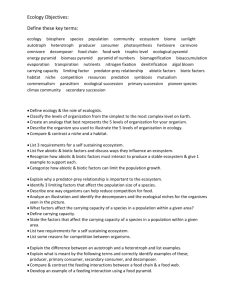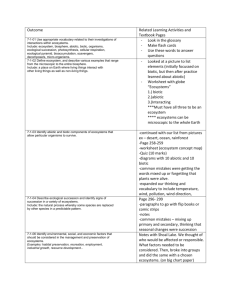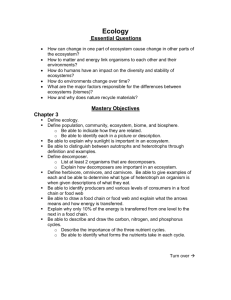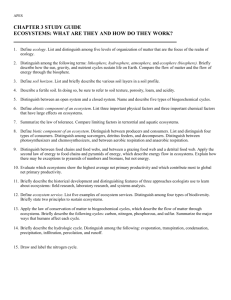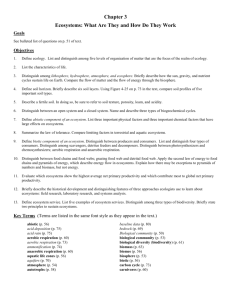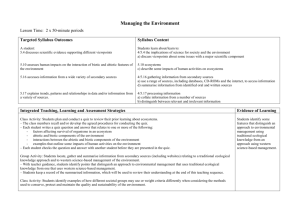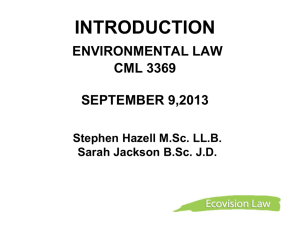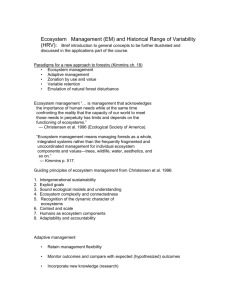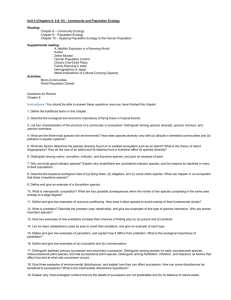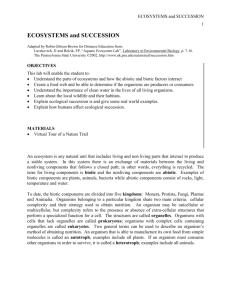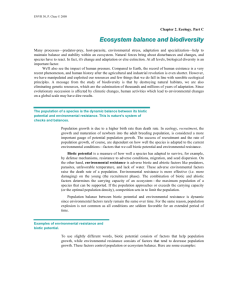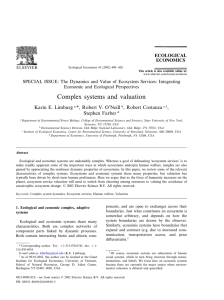Biology Content Targets (2011-2012) Target Set 1 – Ecology I can
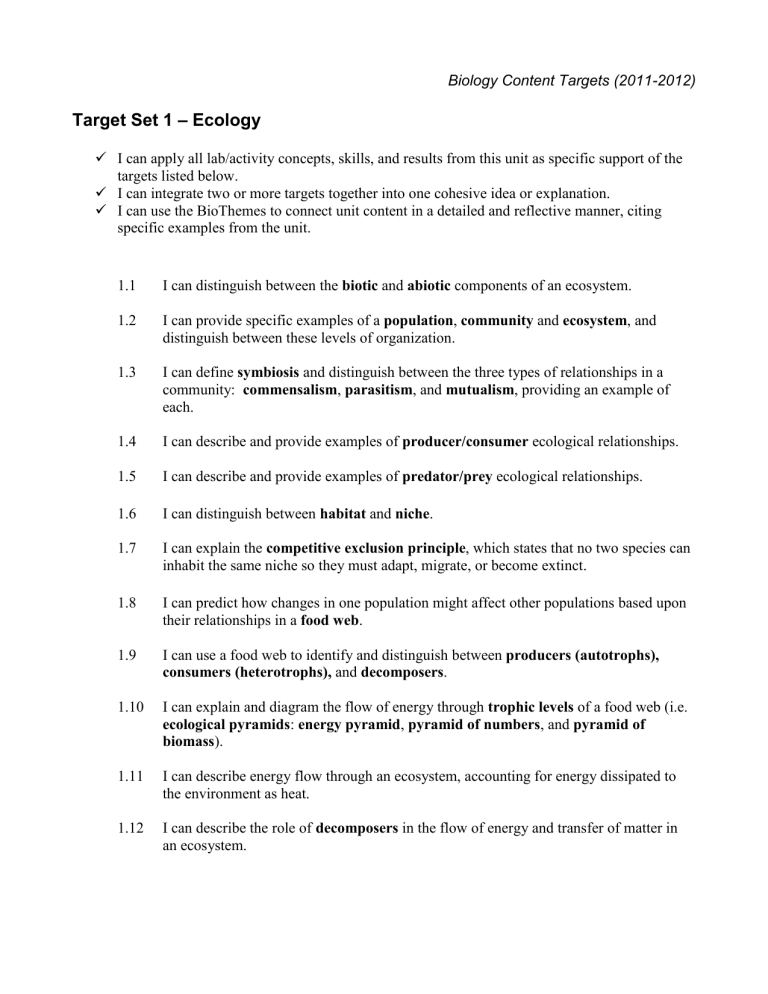
Biology Content Targets (2011-2012)
Target Set 1 – Ecology
I can apply all lab/activity concepts, skills, and results from this unit as specific support of the targets listed below.
I can integrate two or more targets together into one cohesive idea or explanation.
I can use the BioThemes to connect unit content in a detailed and reflective manner, citing specific examples from the unit.
1.1
I can distinguish between the biotic and abiotic components of an ecosystem.
1.2
I can provide specific examples of a population , community and ecosystem , and distinguish between these levels of organization.
1.3
I can define symbiosis and distinguish between the three types of relationships in a community: commensalism , parasitism , and mutualism , providing an example of each.
1.4
I can describe and provide examples of producer/consumer ecological relationships.
1.5
I can describe and provide examples of predator/prey ecological relationships.
1.6
I can distinguish between habitat and niche .
1.7
I can explain the competitive exclusion principle , which states that no two species can inhabit the same niche so they must adapt, migrate, or become extinct.
1.8
I can predict how changes in one population might affect other populations based upon their relationships in a food web .
1.9
I can use a food web to identify and distinguish between producers (autotrophs), consumers (heterotrophs), and decomposers .
1.10
I can explain and diagram the flow of energy through trophic levels of a food web (i.e. ecological pyramids : energy pyramid , pyramid of numbers , and pyramid of biomass ).
1.11
I can describe energy flow through an ecosystem, accounting for energy dissipated to the environment as heat.
1.12
I can describe the role of decomposers in the flow of energy and transfer of matter in an ecosystem.
1.13
I can analyze and explain biodiversity issues and the causes and effects of extinction
(local, ecological, and biological) .
Local: disappearance from a previous location, ie. Deerfield
Ecological: not enough left to fulfill role in ecosystem
Biological: completely gone from Earth
1.14
I can recognize that, and describe how, human activities can deliberately or inadvertently alter the equilibrium in ecosystems.
Examples include introduction of invasive species , development of natural lands, edge effect resulting from suburban sprawl, etc
Humans also may have positive effects on ecosystems.
1.15
I can explain the influences that affect population dynamics, such as competition , limiting factors , birth/death rate , and immigration/emigration .
1.16
I can illustrate and interpret the features of the following population growth curves: exponential growth - J curve , logistic growth - S curve (including carrying capacity and population crash ), and predator/prey.
1.17
I can explain how biotic and abiotic factors cycle in an ecosystem (water, carbon/oxygen, and nitrogen), and describe the role of cycles in transferring matter crucial for sustaining life.
----------------------------------------------------------------------------------------------------------------------------
ENRICHMENT:
I can describe ecosystem stability, including stages of succession ( primary succession and secondary succession ).
I can describe the greenhouse effect and global warming and list the possible causes of each.
Idea for Future:
PROJECT: Human Impact on Ecosystems (negative and positive) ; present in a poster session
-Invasive Species, asian carp or others
-Global Climate Change
-Oil Drilling in ANWR
-Coal Burning Power Plants, air and water pollution issues
-Species Extinction, locally and globally
-Biomagnification, mercury contamination and pesticides, hormones in our foods






